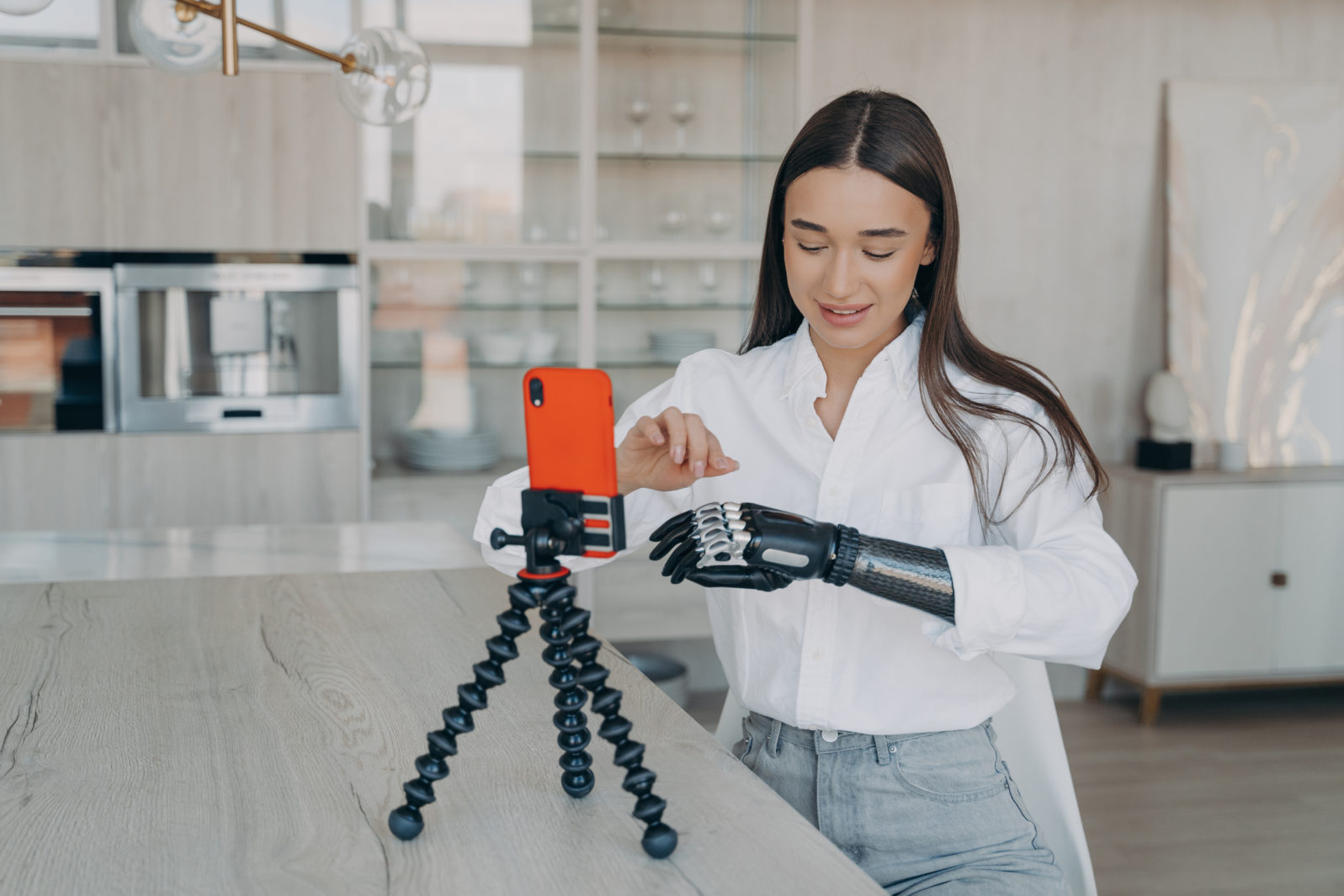Reality Check: Can Bionic Hands Really Compete With Nature?
A geographer born without a left forearm offers an honest assessment of the “bionic hand” arms raceThe author of a recent article in IEEE Spectrum was born without a left forearm so she can talk about the tech reality of prostheses from the front lines:
Today, the people who design prostheses tend to be well-intentioned engineers rather than amputees themselves. The fleshy stumps of the world act as repositories for these designers’ dreams of a high-tech, superhuman future. I know this because throughout my life I have been fitted with some of the most cutting-edge prosthetic devices on the market. After being born missing my left forearm, I was one of the first cohorts of infants in the United States to be fitted with a myoelectric prosthetic hand, an electronic device controlled by the wearer’s muscles tensing against sensors inside the prosthetic socket. Since then, I have donned a variety of prosthetic hands, each of them striving toward perfect fidelity of the human hand—sometimes at a cost of aesthetics, sometimes a cost of functionality, but always designed to mimic and replace what was missing.
Britt H. Young, “The Bionic-hand Arms Race” at IEEE Spectrum (August 21, 2022)
Young, a geographer, complains,
We are caught in a bionic-hand arms race. But are we making real progress? It’s time to ask who prostheses are really for, and what we hope they will actually accomplish. Each new multigrasping bionic hand tends to be more sophisticated but also more expensive than the last and less likely to be covered (even in part) by insurance. And as recent research concludes, much simpler and far less expensive prosthetic devices can perform many tasks equally well, and the fancy bionic hands, despite all of their electronic options, are rarely used for grasping.
Britt H. Young, “The Bionic-hand Arms Race” at IEEE Spectrum (August 21, 2022)
She has written elsewhere about the problems with prosthetic arms. The reality, she reveals, is that most people who need a prosthetic hand/arm actually prefer the available “fleshy” arm and use the prosthesis only when they must — and for less complex tasks:
The clips show the clumsiness, miscalculations, and accidental drops that are familiar to even very experienced prosthetic-hand users. Often, the prosthesis simply helps brace an object against the body to be handled by the other hand. Also apparent was how much time people spent preparing their myoelectric prostheses to carry out a task—it frequently took several extra seconds to manually or electronically rotate the wrists of their devices, line up the object to grab it just right, and work out the grip approach.The participant who hung a bottle of disinfectant spray on their “hook” hand while wiping down a kitchen counter seemed to be the one who had it all figured out.
Britt H. Young, “The Bionic-hand Arms Race” at IEEE Spectrum (August 21, 2022)
In reality, she says, current cost is a huge barrier: There are “low-tech prosthetics that are available right now and that need investments in innovation to further bring down costs and improve functionality.” And health insurance is an ongoing problem.
In a challenging mood, she urges “releasing ourselves from the bionic-hand arms race” to bring prosthetic aspirations down to earth.
Perhaps there are twin goals here: Engineers will not cease from striving to remedy nature’s defects — that’s what an engineer is. But we must accept that we cannot “transcend” nature in any way. We can only ever work with her, successfully or otherwise.
You may also wish to read: The Bionic Man was science fiction; the bionic hand is not. A recent internet-savvy bionic hand, developed by an American neuroscientist and computer engineer, is the most flexible yet, with sensory feedback. The trouble is, if the new bionic hands are going to help most of the world’s amputees , they can’t cost six million dollars, as in the old TV show.
